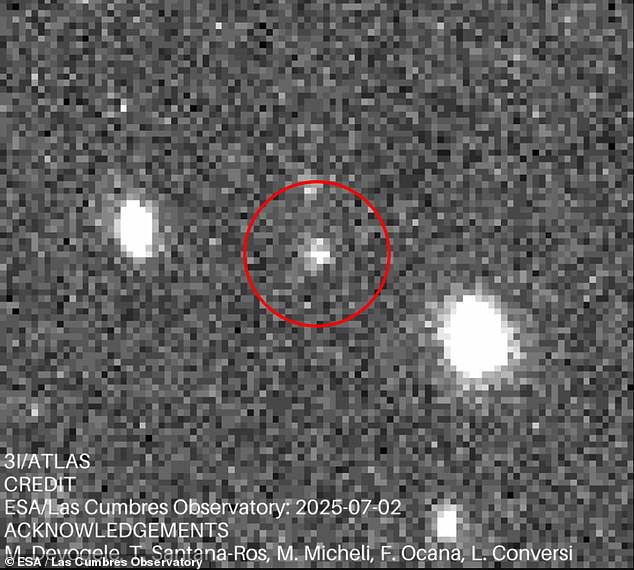
A Mysterious Interstellar Object Captured in Space
A strange object from beyond our solar system has been observed for the first time as it travels through space at incredible speeds. This unexpected visitor, named 3I/ATLAS, was initially detected by NASA on July 1 and has since been confirmed to have originated from a distant star. The object is approximately 12 miles (20 kilometers) long and is moving toward the sun at a speed of 135,000 miles per hour.
Using a powerful telescope in Hawaii, the European Space Agency (ESA) has captured the first video of 3I/ATLAS during its journey through space. The footage shows that the object is extremely bright, suggesting it could be significantly larger than other interstellar objects or may have an alternative source of illumination.
Most scientists believe that the brightness is due to the object being an active comet, which produces a glowing "coma" of ice and gas as it approaches the sun. However, one Harvard professor, Avi Loeb, suggests that this phenomenon might not be explained by natural causes. He stated that if 3I/ATLAS is not a comet, its brightness would be surprising and could hint at a non-natural origin, such as artificial light.
Tracking the Interstellar Visitor
3I/ATLAS was first spotted as a faint light by NASA's Asteroid Terrestrial-impact Last Alert System (ATLAS) telescope. Since then, astronomers around the world have worked to gather more data about the object. Scientists have also reviewed older observations to find any previous sightings, a process known as precovery. By combining these with new data, they were able to confirm that 3I/ATLAS is indeed an interstellar object.
Currently, the object is 420 million miles (670 million kilometers) away from Earth. Its trajectory and speed indicate that it must have been ejected from its own star before entering our solar system. NASA predicts that 3I/ATLAS will reach its closest point to the sun on October 30, at a distance of 130 million miles (210 million kilometers), which is within the orbit of Mars.
Thankfully, the object poses no threat to Earth and will pass by at a safe distance of about 150 million miles (240 million kilometers) at its closest point.
A Rare Discovery
This is only the third time that scientists have identified an interstellar object passing through the solar system. The first was 'Oumuamua in 2017, followed by Borisov in 2019. When 'Oumuamua was first detected, certain irregularities in its movement led Professor Loeb and his colleague Dr. Shmuel Bialy to suggest it could have an alien origin.
Professor Loeb noted that 'Oumuamua exhibited a large non-gravitational acceleration, which was unusual given its lack of evaporation. He now believes that 3I/ATLAS could be similar to 'Oumuamua and potentially an alien craft. While there is no evidence to support this idea, some researchers say it cannot be ruled out entirely.
Professor Michael Garrett, Director of Jodrell Bank Centre for Astrophysics, emphasized the need for more observations. He said, "More observations are definitely needed." When asked if the object could be an alien craft, he responded, "Who knows—it could be. That’s why it will be important to make as many different measurements as possible to test all hypotheses."
Understanding the Nature of 3I/ATLAS
Despite these theories, Professor Garrett added that there is currently no evidence that 3I/ATLAS is alien in nature. Instead, it is more likely an icy body that escaped from another planetary system and wandered into our solar system by chance.
The majority of current evidence supports the idea that 3I/ATLAS is a comet. Astronomers have observed a nebulous envelope of gas and dust, known as a coma, surrounding the object as it heats up near the sun. This explains why 3I/ATLAS appears so bright, as the material in the coma reflects sunlight more effectively than rock or ice alone.
Dr. Mark Norris, an astronomer from the University of Central Lancashire, explained that if there is a coma, it is by definition a comet because it indicates outgassing. He added that as the object gets closer to the sun, the cloud of material should grow larger, and more observations will help clarify its nature.
However, by the time 3I/ATLAS reaches its closest point to Earth, it will be hidden behind the sun. Astronomers will need to wait until December for the best opportunity to observe the object.
Post a Comment